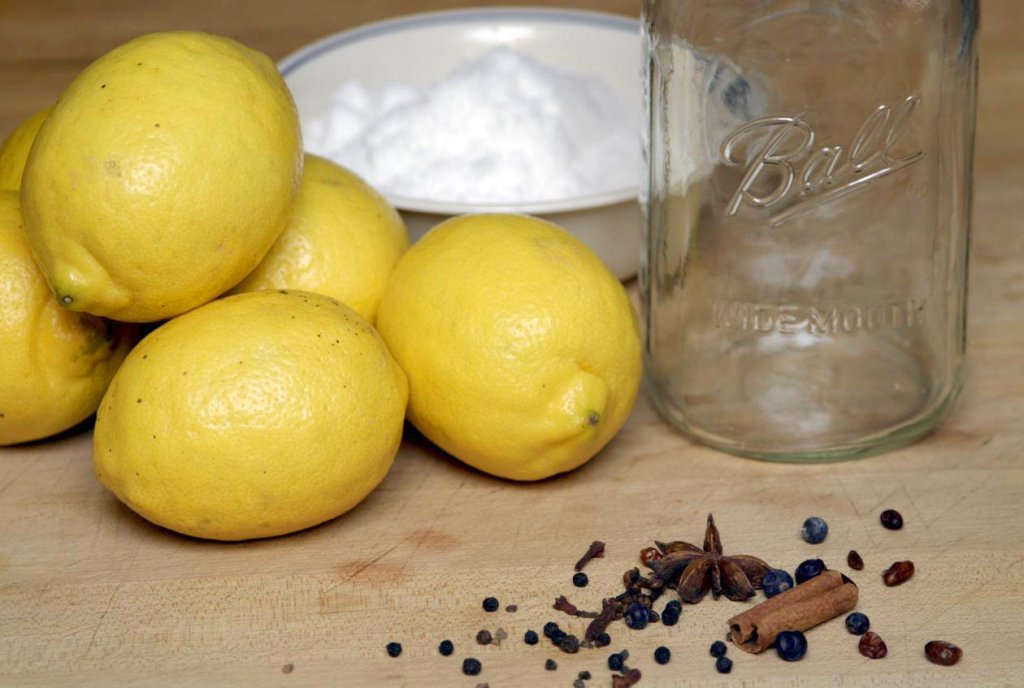
LIKE SALT, ONLY BETTER
There are dozens of posts out there about preserved lemons, so to avoid redundancy I thought I’d take the idea one step further and share an idea I had a while back. Preserved lemons are an item that my pantry is never without. They’re easy to make and keep forever, and their bright, unmistakeable flavor is essential to a variety of dishes, particularly Moroccan. What I love about them is that to the nose, they smell candied; it’s impossible to tell that it’s salt that has concentrated their flavors rather than sugar. That sweet, lemony aroma permeates any dish they’re added to, but when the lemons are gone the salt that worked its osmotic magic on them has accrued a great deal of interest in the process. This may already be a thing, but I haven’t heard of it before: preserved lemon salt.
The process is easy. Wash and quarter organic lemons and pack them in a jar with salt and lemon juice and such spices as you are inclined to add. I like clove, star anise, cinnamon, and black pepper. Between the salt and the acidity, nothing at all is going to grow in there and over time they turn into homely brown crescents with a intense and powerfully illuminating lemon flavor. It works with other citrus just as well; I have done the same thing with limes and yuzu to excellent effect. Cover the jar, making sure the lemons are submerged in the liquid, and leave it in a cupboard for at least a month.
To use them, scrape the pulp off the peel and discard it. Mince the peel before deploying in soups, stews, tagines, vinaigrettes, or anything else. Rinse them first if you want, since they’re very salty. As your jar nears the bottom, make another one.
And once you’ve used the last sticky, slimy, fragrant wedge of glory from the first jar, pour the lemony brine through a strainer onto a silpat and pop it in a low oven or dehydrator (or out on the porch or in your car in summer) until the moisture evaporates.
Give the fully dried out salt a bit of a grind to powder it, and put it in a spice jar. The spices and residual lemon solids in the brine will caramelize if you dry it out hotter than a dehydrator (I did this in the oven at about 150˚) which adds another layer of flavor. I also ground this up with a little plain sea salt to tone the flavor down a bit. Other spices and herbs can also be added to obtain a custom mix.
The uses are infinite: sprinkle it on a chicken before roasting, cure gravlax with it, make brine for olives, hit some scallops with it before you sear them hard. Use a bit as finishing salt on lamb or fish, or sprinkle a little bit on top of lemon squares or tarts to give them a sublime salt caramel vibe. It plays superbly with ras-el-hanout or 5-spice in rubs. It’s a fabulous ingredient, and it makes something sublime out of the drab goop that we might otherwise pour down the drain; as with fermented pickle brine and whey, the byproducts of these techniques are often worth the effort all by themselves.






No comments:
Post a Comment